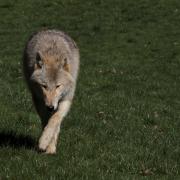As a sensory experience, there is little to beat bluebells, one of nature’s most stunning spectacles. From mid-April to late May, many of Cumbria’s ancient woodlands come alive with a carpet of blue, mauve and deep violet petals and the unmistakable heady scent of the flowers.
Bluebells spend most of their year underground as bulbs, emerging, often in droves, in spring. The English bluebell’s botanical name is Hyacinthoides non-scripta, but the prettiness of the flowers is matched by some of the common names they have acquired over the years: cuckoo’s boots, granfer griggles, witches’ thimbles, lady’s nightcap, fairy flower and cra’tae (crow’s toes).
It is estimated that up to 50 per cent of the world’s population of bluebells are found in the UK and they are now a protected species.
Native bluebells are bell-shaped with six petals and up-turned tips that hang to one side of their curving stems (known as an inflorescence), narrow leaves and a sweet scent. Up to 20 deep-blue flowers can grow on one inflorescence. The pollen inside is creamy-white.
Non-native Spanish bluebells, which some claim were introduced in the late 17th century but others say were a Victorian garden plant, are a more vigorous plant and are the ones more commonly seen in gardens. While they have broad leaves, grow upright and may flower more profusely with bigger blooms all around the upright stem, they have little to no scent and are paler in colour.
Both varieties can also come in white and pink.

Native bluebells are unfortunately less common, due to a loss of their favoured habitats – woodlands and hedgerows – and hybridisation with the Spanish bluebell.
The Spanish bluebell is more vigorous than our native bluebell, so can outcompete it for resources like light and space. It can hybridise with our native, too, producing fertile plants that show a whole range of mixed features from both species.
Over time, this hybridisation can change the genetic makeup of the native bluebell diluting its characteristics, weakening it and potentially evolving it into something else.
The bluebell’s bulb contains muselage and inulin which, according to the National Trust, was used as a glue for fixing feathers and arrows and for bookbinding. The Elizabethans used the starch-like juice from the bluebell bulb to stiffen their fancy ruff collars.

Bluebell bulbs are poisonous and were not often used medicinally but the National Trust points to legend that says they were used by 13th century monks to treat snakebites and leprosy.
Present-day researchers are looking into the bluebell’s highly effective animal and insect repellent properties.
Cumbria is blessed with many locations – not all woodland – where bluebells can be seen and smelled.
Cumbria Wildlife Trust cares for a number of native bluebell woodlands across the county, and a visit to one of its nature reserves typically rewards not only with breath-taking displays of these much-loved wildflowers but also sightings of wildlife.

At Barkbooth Lot, at Crosthwaite, near Kendal, for example, the range of habitats means there is a huge diversity of wildlife to discover. Oak and birch are the most common trees and on the woodland floor, along with the bluebells, there are the delicate white flowers of wood sorrel and wood anemone. Dead wood, both fallen and standing, is deliberately left to create habitats for many species of invertebrates and birds.
While it is a small nature reserve, Barkbooth has a varied landscape and on a clear day from the highest point you can get magnificent views of both the Lakeland fells and Morecambe Bay. On a spring walk through the nature reserve, as well as enjoying the stunning bluebell spectacle, the woodland is alive with the songs of willow warbler, chiffchaff and blackcap.
Here are some more of our favourite bluebell locations but remember that flowering times may vary.
ARGILL WOODS NATURE RESERVE, NEAR BROUGH
The steep, inaccessible nature of the woods means that parts of the area have probably been wooded since medieval times, providing a sanctuary for woodland plants and animals. An abundance of bluebells can be enjoyed while observing dippers and grey wagtails that feed in the clear water around the waterfalls and pools. Birds in the woodland include great spotted woodpecker, treecreeper, redstart and many species of tit that find the mature trees (ash, birch and oak) ideal for providing food, roosting and nesting places.
MILTONRIGG WOODS, BRAMPTON
These peaceful, ancient woodlands date back at least 400 years but now there is an accessible, surfaced route through the woodlands and past the pond. Managed by the Woodland Trust, there is a second, longer circular route through the woodland on unsurfaced paths.

WINSTER VALLEY
In a lesser-known part of the Lake District National Park lie some of the most superb spots for bluebell lovers: Cowclose Wood and, across the river, Low Loft Wood and Crag Wood, all near Bowland Bridge.
LOUGHRIGG TERRACE, GRASMERE
Much photographed both for the flowers and the view of Grasmere and the valley beyond, the display can be reached via a pleasant lakeside footpath.
BRANDELHOW WOODS
The woods on the shore of Derwentwater are the birthplace of the National Trust and can be reached by ferry or the lakeside footpath.
SKELGHYLL WOODS
This ancient woodland at Ambleside boasts the tallest Wellingtonia and Douglas fir trees in Cumbria, and the tallest grand fir in England. Start a walk at Stagshaw Gardens. There are picnic benches at all the best viewpoints and you may be lucky enough to spot a red squirrel too.
HOLME WOOD, LOWESWATER
The wood sits on the shore of one of Cumbria’s best loved lakes and is a classically English mix of oak, chestnut, ash, sycamore, alder and lime that provide the dappled sunlight bluebells love. An easy walk stays mostly along the lake shore, with a short road section.

MUNCASTER CASTLE
The gardens at Muncaster may be best known for rhododendrons, but at this time of year they offer bluebells too offering an enchanting walk through ancient coppice woodlands high above the castle. Although the paths are steep and rough, the displays have inspired many, including the poet Gerard Manley Hopkins. Accessible with castle entry.
RANNERDALE KNOTTS
Rannerdale is probably the best known of Cumbria’s bluebell locations – but is, therefore, also the most visited to the point where the displays are roped off. It’s a location that keeps on giving with both Crummock Water and Buttermere too.
DOROTHY FARRER’S SPRING WOOD, STAVELEY
The wood is one of four that come together to form Staveley Woodlands Nature Reserve run by Cumbria Wildlife Trust. The woodlands are part of the Lake District’s remaining fragments of temperate rainforest, which formed due to the combination of mild weather and high rainfall. Rare mosses and liverworts are found here, as well as bluebells.
WARRINERS WOOD, KENDAL
Warriners Wood was acquired by the Woodland Trust in 1995. The 8.87-acre wood is mostly upland ash woodland on limestone with naturalised sycamore and hazel understorey in places.
SEA WOOD, BARDSEA
The Woodland Trust says Sea Wood is one of its top ten bluebell woods and offers the chance to visit both a wood and the seaside at once. Sea Wood stands against the north west shore of Morecambe Bay and is edged by the shingle beach of Ulverston Sands.
nationaltrust.org.uk cumbriawildlifetrust.org.uk woodlandtrust.org.uk – check out its live flowering map at naturescalendar. woodlandtrust.org.uk










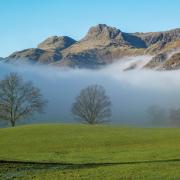

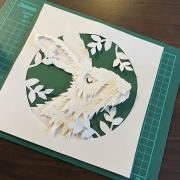

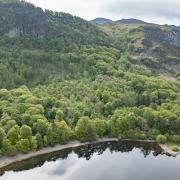







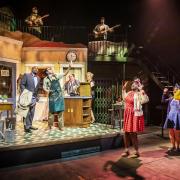
![Cookham Barns 1925, Gilbert Spencer, Abbot Hall [credit Liss Llewellyn]](/resources/images/128x89/1x/17938067.jpg)
![Cookham Barns 1925, Gilbert Spencer, Abbot Hall [credit Liss Llewellyn]](/resources/images/180x180/1x/17938067.jpg)

